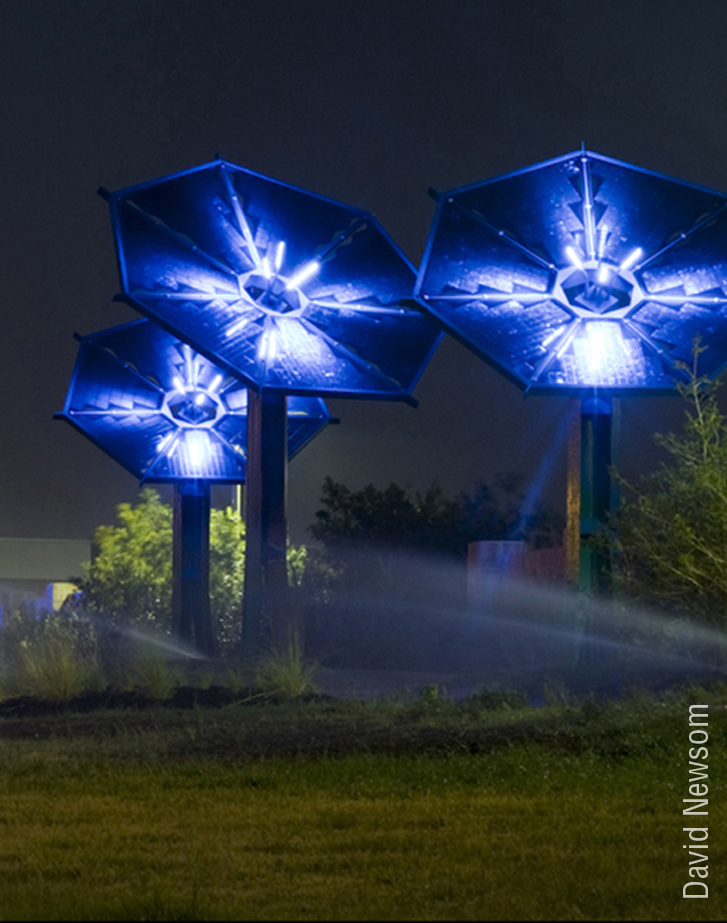For centuries, humans have created icons to signify persons or objects they cherish. So when artist Angela Manno decided to call attention to skyrocketing rates of plant and animal extinction, she gravitated to icons.
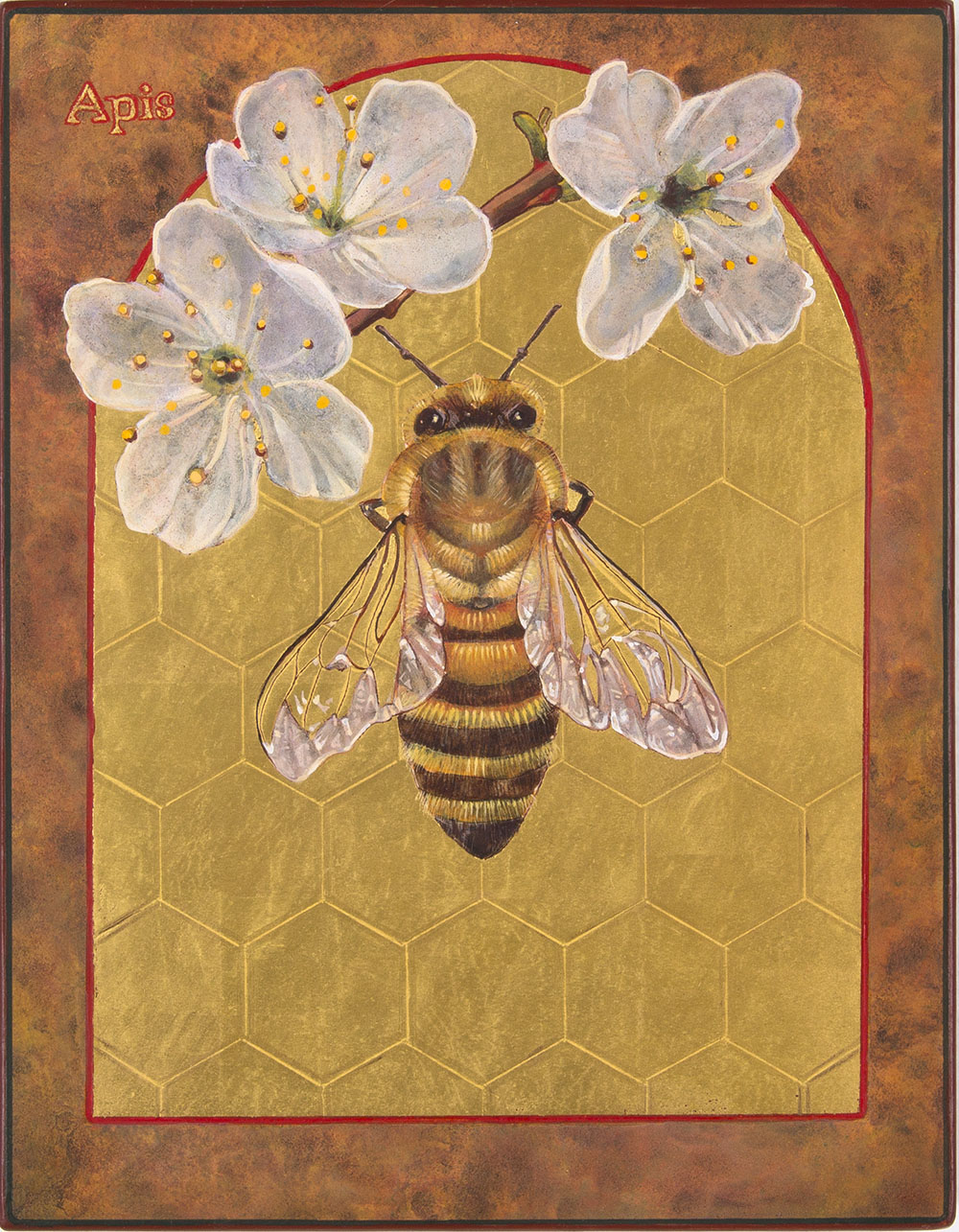
Angela Manno, Apis, The Honey Bee. Egg Tempera and Gold Leaf on Wood. 9” x 7” x 1.” ©2016 Angela Manno. Courtesy of the artist.
“I am the honeybee. I work tirelessly to produce my honey, my pollen and to carry out my irreplaceable work of pollination. My species is threatened due to the use of toxic pesticides, destruction of my habitat and lack of forage due to monocultures. Without me, coffee, apples, almonds, tomatoes and cocoa, just to name a few of the crops, would be wiped out. I have intrinsic value in my own right, not just my use to humans.”
— Statement accompanying this icon at Laudato Si’ Week 2022, the Vatican’s seven-year anniversary celebration of Pope Francis’ groundbreaking encyclical on ecology
Trained in Russian iconography, Manno intuitively grasped that the genre of iconography – as well as its materials and process – uniquely suited her purpose.
She stayed true to the traditions of Byzantine iconography, portraying her subjects portrait-style in gold-leafed hues beneath stone arches. But in lieu of religious persons or objects, Manno’s subjects were plants or animals in danger of extinction.
Her materials were drawn from the Earth itself and kept “as close to their natural state as possible” – pigments made of ground stone and ochres mixed with an emulsion of egg yolk, white distilled vinegar and water.
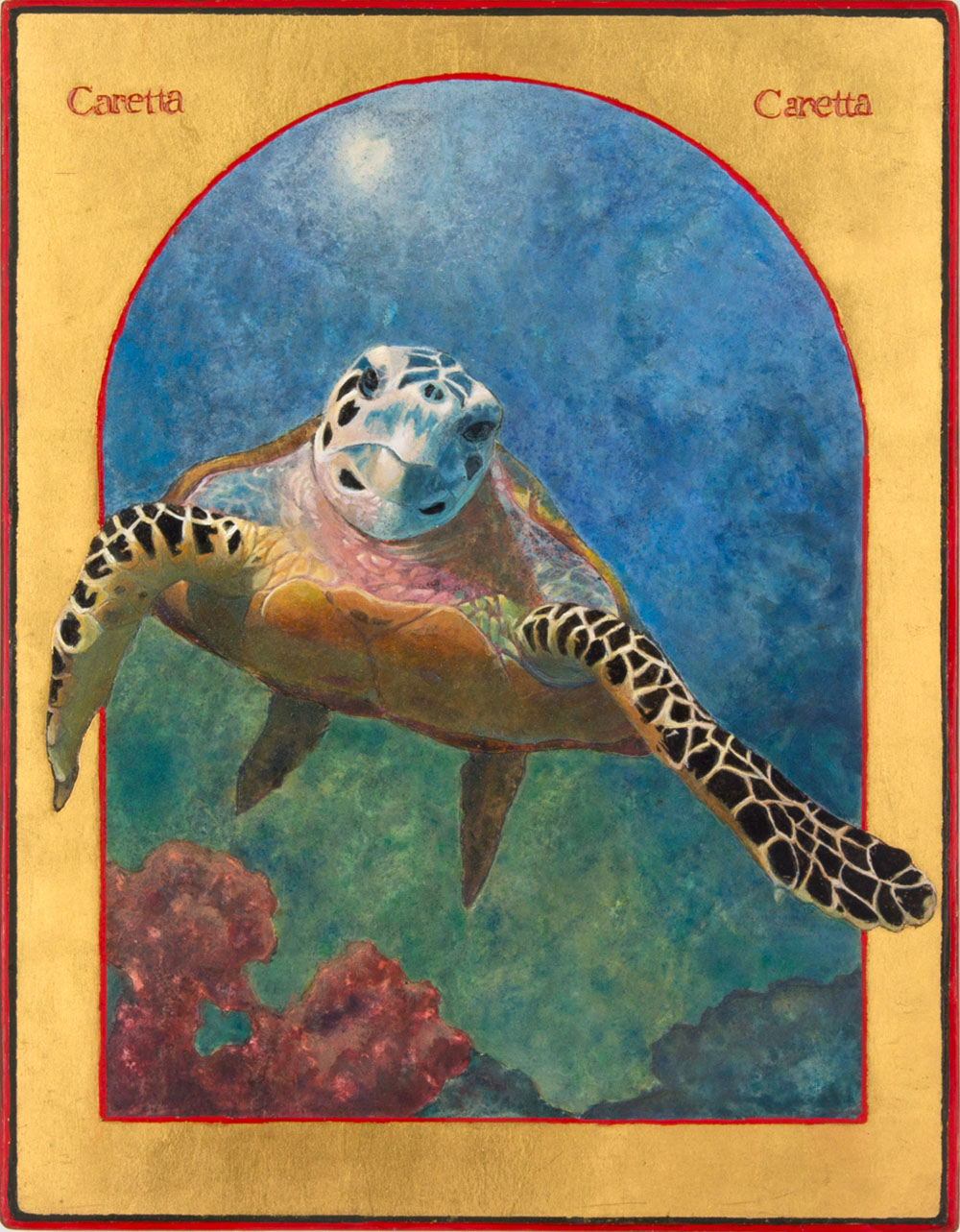
Angela Manno, The Loggerhead Sea Turtle, Caretta Caretta. Egg Tempera and Gold Leaf on Wood. 9” x 7” x 1.” ©2019 Angela Manno. Courtesy of the artist.
“I often mistake plastics floating in the ocean and plumes of oil from oil spills for my food. When I eat them, I die…I am now critically endangered.”
—Statement accompanying this icon at Laudato Si’ Week 2022, the Vatican’s seven-year anniversary celebration of Pope Francis’ groundbreaking encyclical on ecology
Her process was laborious: every color and stage of the process held meaning related to human life. Manno started with a wooden board representing the “Tree of Life.” Before carving an image into the board, she applied 13 layers of white gesso, creating a blank white surface representing pure consciousness. Then she added a layer of clay, an overlay of gold, and three layers of paint, representing our physical, spiritual and intellectual life, respectively.
Manno spent roughly 6 – 8 weeks creating each icon. The entire Contemporary Icons of Threatened and Endangered Species series consists of 25 images, including mammals, birds, amphibians, invertebrates and plants.
Each icon in the series is a miniature 9” x 7” – dimensions that encourage the viewer to draw close, lean in, and concentrate on the image and its message. “They’re meant to be contemplated,” Manno explains.
And her message is both powerful and inspiring! Manno proceeds from the premise that our current ecological catastrophe is the result of an anthropocentric mindset that divorces humans from nature. She aims to awaken our “re-enchantment” with the Earth, empowering us to appreciate the Earth’s awesome beauty, see its fragile interconnections, and make a transformational leap to a new way of thinking – one that affords non-human species their “rightful, equal place in the community of being.”
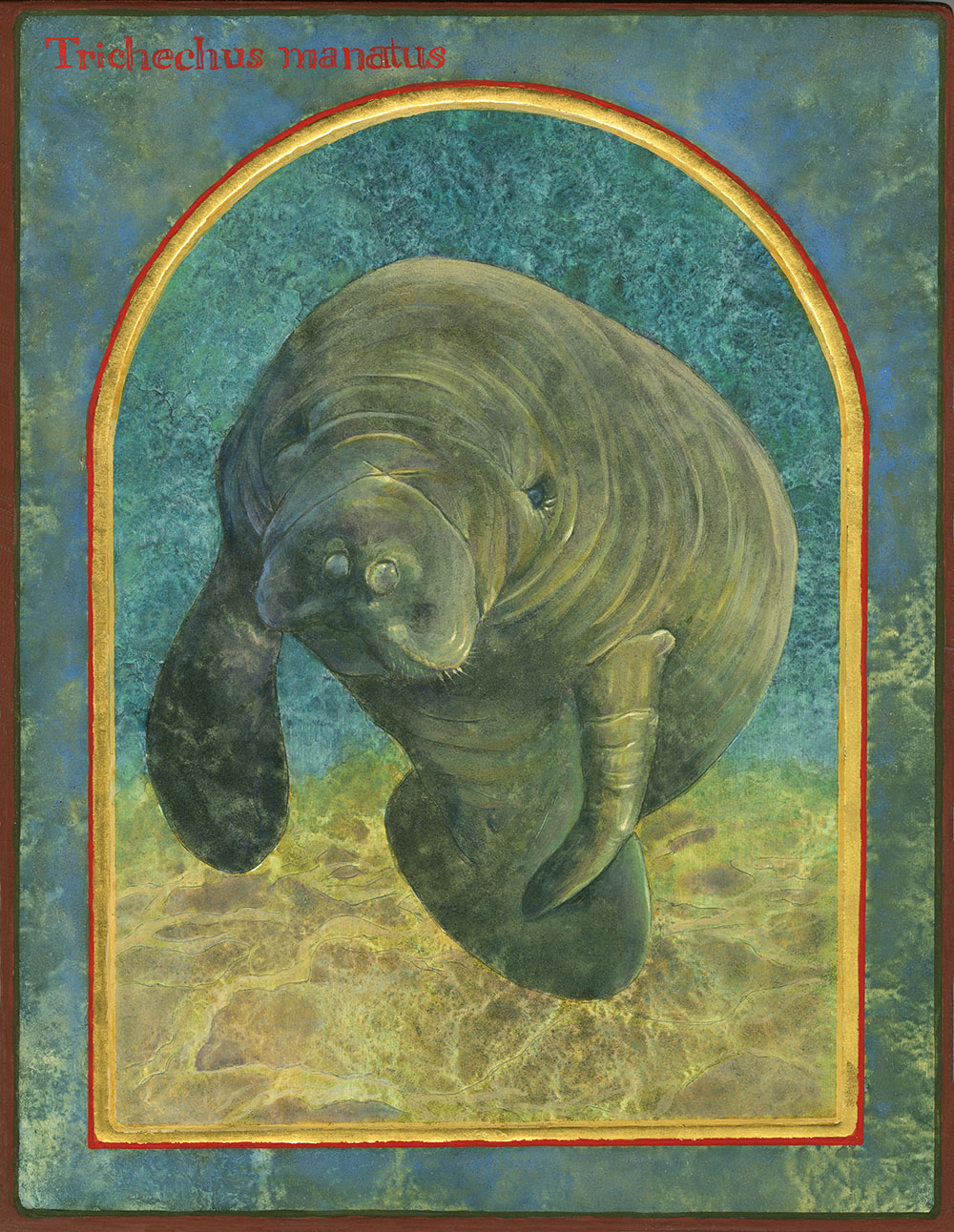
Angela Manno, The Florida Manatee, Trichechus Manatus. Egg Tempera and Gold Leaf on Wood. 9” x 7” x 1.” ©2022 Angela Manno. Courtesy of the artist.
Manno’s message draws inspiration from the twentieth century cultural historian Thomas Berry (1919-2009), who saw humans “as neither an addendum nor an intrusion into the universe … [but] quintessentially integral” with the universe. Berry echoed the teachings of medieval philosopher and theologian, Thomas Aquinas, who wrote:
“Because the divine could not image itself forth in any one being, it created the great diversity of things so that what was lacking in one would be supplied by the others and the whole universe together would participate in and manifest the divine more than any single being.”
Applying Aquinas’ philosophy to contemporary times, Berry warned that the scale of current ecological crises challenges us to transcend our isolation, join the larger community of living species, and shift to a biocentric perspective in which “any progress of the human at the expense of the larger life community [is viewed as] a diminishment of human life itself.”
And Berry also recognized the essential need for humans to act, as well as reflect, on environmental crises:
“While the human cannot make a blade of grass, there is [liable] not to be a blade of grass unless it is accepted, protected and fostered by the human.”
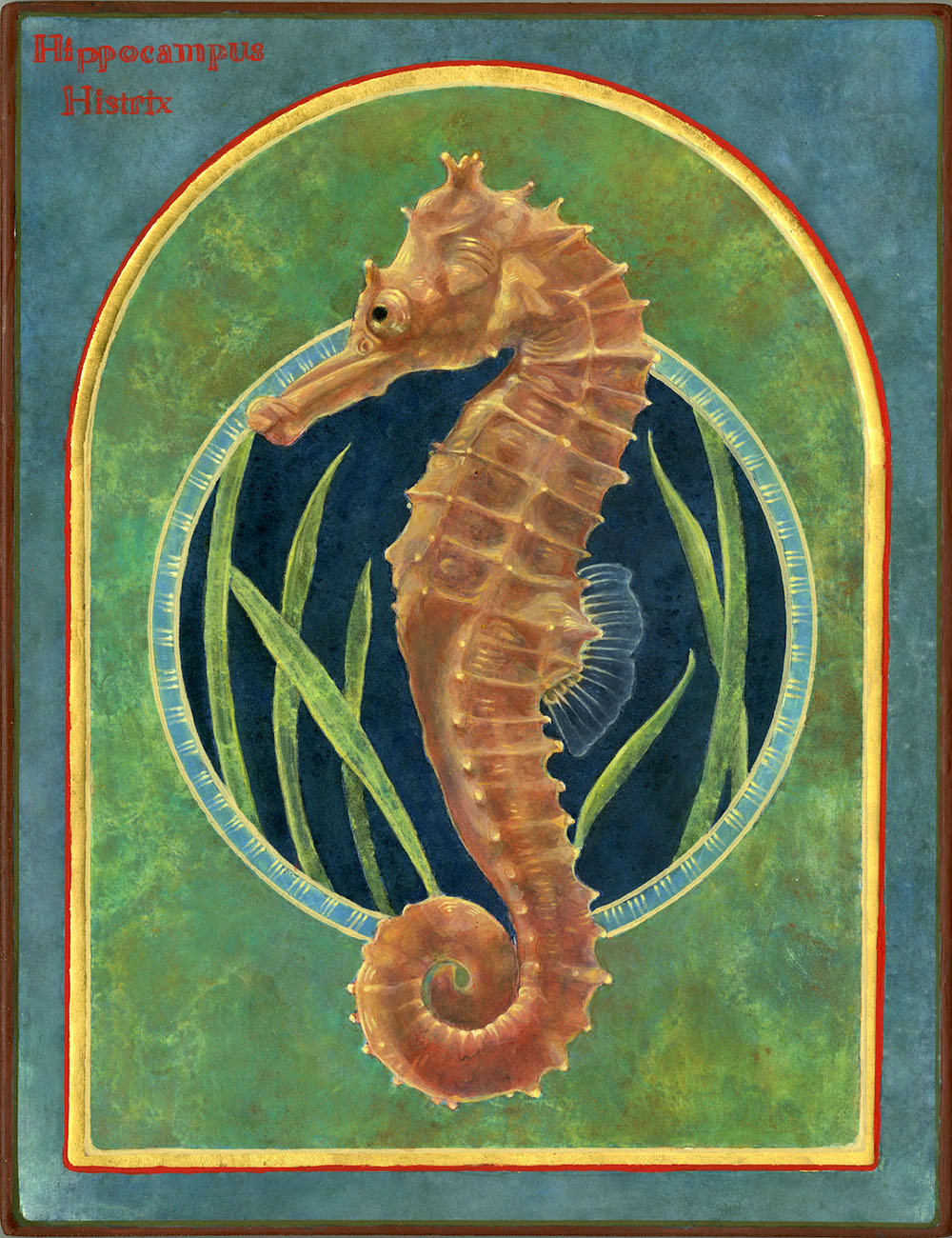
Angela Manno, The Sea Horse, Hippocampus Histrix. Egg Tempera and Gold Leaf on Wood. 9” x 7” x 1.” ©2022 Angela Manno. Courtesy of the artist.
Manno, like Berry, aims to inspire collective action:
“I hope that my work conveys the feeling that all life is sacred, that my viewers feel remorse at the thoughtless decimation of species and habitat and are moved to action to preserve what is left.”
And notwithstanding the magnitude of the challenge Manno outlines, she and her icons exude contagious optimism:
“[E]ach one of us has agency. Every action has an impact on the whole, and concerted action is what’s needed now…. We must not give in to what we perceive as corruption or inevitability — it dehumanizes us.”
The entire Contemporary Icons of Threatened and Endangered Species collection is viewable online at https://angelamanno.com/endangered-species-collection. Don’t miss this exquisitely beautiful and deeply inspiring online exhibition!

